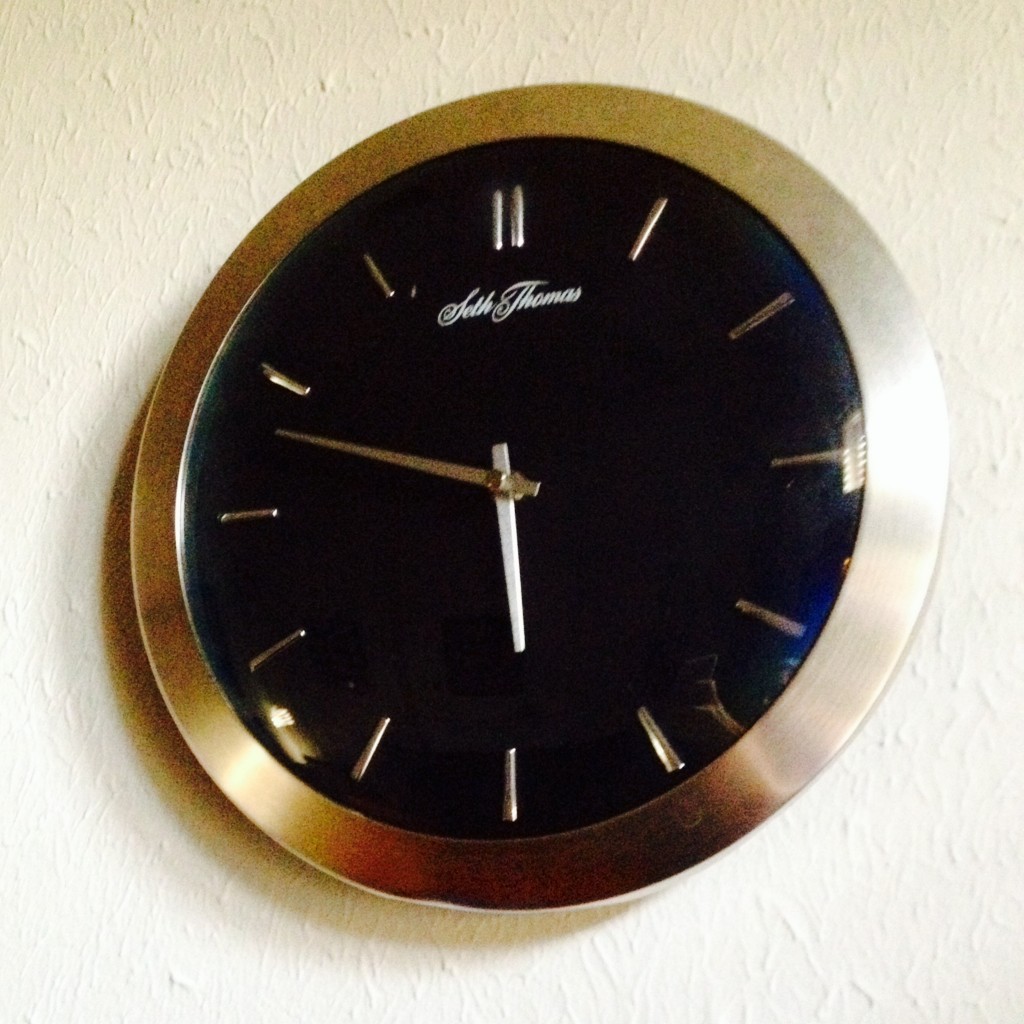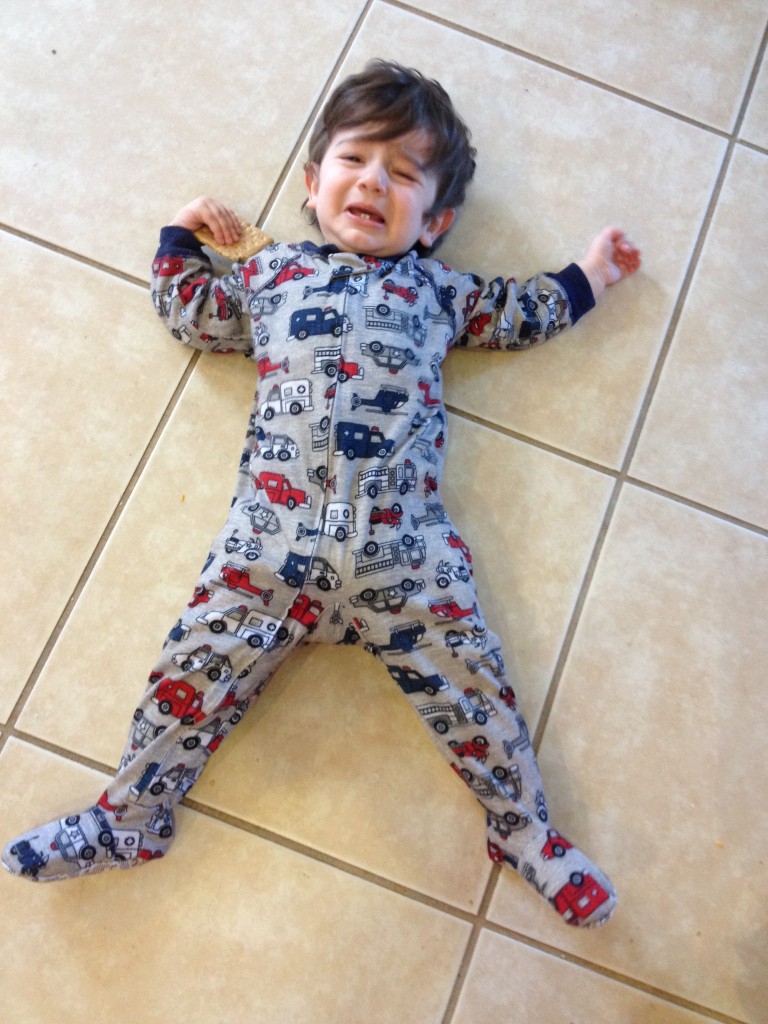 Parents of young children across the world have one thing in common. It does not discriminate, and it strikes children of all ages. It makes parents watch the clock in fear, cover their eyes and ears and cringe. Whining, tantrums, squeals and defiance occur coincidentally during the late afternoon/early evening hours, most commonly documented and referred to as: The Witching Hour. (However, in our household, and I believe many of you will agree, it is more like hours.) I was first introduced to the term during the last trimester of our oldest at one of the many new parent classes we assisted. I glazed over the topic and in retrospect, after three years of experience in the field, I was very naive. How could our beautiful baby one day suffer from this phenomenon? The combination of exhausted parents, after spending the day on our feet, working behind a desk or chasing little ones, with tired, hungry and overly stimulated infants and/or toddlers is a recipe for meltdowns. It IS the most challenging time of the day in our household.
Parents of young children across the world have one thing in common. It does not discriminate, and it strikes children of all ages. It makes parents watch the clock in fear, cover their eyes and ears and cringe. Whining, tantrums, squeals and defiance occur coincidentally during the late afternoon/early evening hours, most commonly documented and referred to as: The Witching Hour. (However, in our household, and I believe many of you will agree, it is more like hours.) I was first introduced to the term during the last trimester of our oldest at one of the many new parent classes we assisted. I glazed over the topic and in retrospect, after three years of experience in the field, I was very naive. How could our beautiful baby one day suffer from this phenomenon? The combination of exhausted parents, after spending the day on our feet, working behind a desk or chasing little ones, with tired, hungry and overly stimulated infants and/or toddlers is a recipe for meltdowns. It IS the most challenging time of the day in our household.
My husband receives the brunt of the storm. When he arrives in the evening, the kids are ecstatic and greet him repeating “Da-Da! Da-Da!” while seeking immediate hugs. However, within moments, those squeals of excitement quickly turn into tears, repeating “No!” and wanting to play in lieu of eating dinner. Our sweet happy kids during the day quickly morph into whining creatures. (At times, I wonder if Robert Stevenson was inspired to write his novel about Dr. Jekyll and Mr. Hyde after spending an afternoon with little ones.) Explaining this phenomenon to those who do not experience it first hand on a daily basis is frustrating. And, despite hearing the racket in the background, the noise does not trigger flashbacks of their past witching hour experiences.
 Developing a daily balanced menu containing protein, vegetables and grain, purchasing the ingredients and preparing supper on a daily basis is a great task. When you combine that with a toddler wrapped around your leg and another threatening a meltdown, The Witching Hour becomes not only a physical feat but a mental one as well. It is important for us that we eat at the dining room table as a family. Supper is when we merge and talk about our day as we teach manners and instill a healthy routine. Until early February, the threat of Santa returning to snatch their new toys worked well in our home. We were also inspired by a mom on the playground to use a timer during supper time. Set a time range with a five minute pre-alarm. Get creative with the tone you chose. Apparently, anticipating the end of mealtime helps them realize that they need to finish their meal before their next activity, say bath and/or bedtime. It is a challenge, but I know striving for this routine, despite the tantrums, will benefit us as a family in the end.
Developing a daily balanced menu containing protein, vegetables and grain, purchasing the ingredients and preparing supper on a daily basis is a great task. When you combine that with a toddler wrapped around your leg and another threatening a meltdown, The Witching Hour becomes not only a physical feat but a mental one as well. It is important for us that we eat at the dining room table as a family. Supper is when we merge and talk about our day as we teach manners and instill a healthy routine. Until early February, the threat of Santa returning to snatch their new toys worked well in our home. We were also inspired by a mom on the playground to use a timer during supper time. Set a time range with a five minute pre-alarm. Get creative with the tone you chose. Apparently, anticipating the end of mealtime helps them realize that they need to finish their meal before their next activity, say bath and/or bedtime. It is a challenge, but I know striving for this routine, despite the tantrums, will benefit us as a family in the end.
On rare occasions, I feel Jupiter’s sixty something moons have aligned and that our family reflects a Norman Rockwell painting. When the kids are giggling in their seats and chasing one spoonful after another of food, I smile at my husband. It is those rare moments that I immortalize to help me forget The Witching Hour. No one said parenthood was easy, but the rewards are bountiful.

















Some may argue with me, but it is my personal belief that The Witching Hour is the world’s most powerful form of birth control!
Mariann, I do not think you are alone in your belief:) Personally, in lieu of carrying an egg or dolls, I believe high schools should consider having students visit a home with a toddler during the witching hour. It will take only one hour for them to learn the message!
Good idea! I’ll send the following pitch to every high school in the GNO area: My home is open to anyone thinking of becoming the next star of “16 and pregnant.” You may only come between 4pm and 8 pm, 7 days a week.